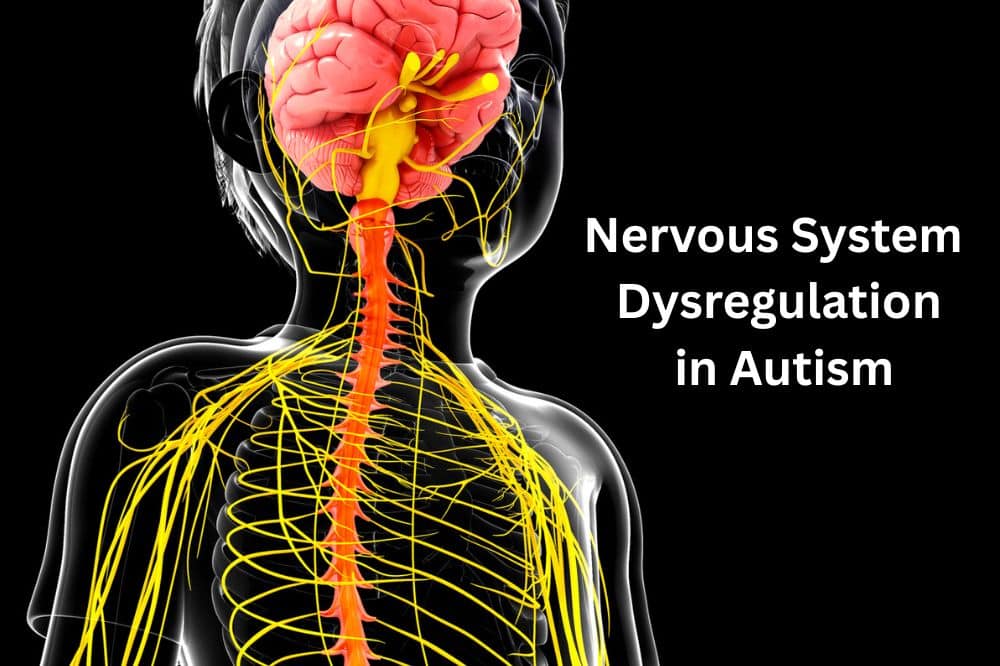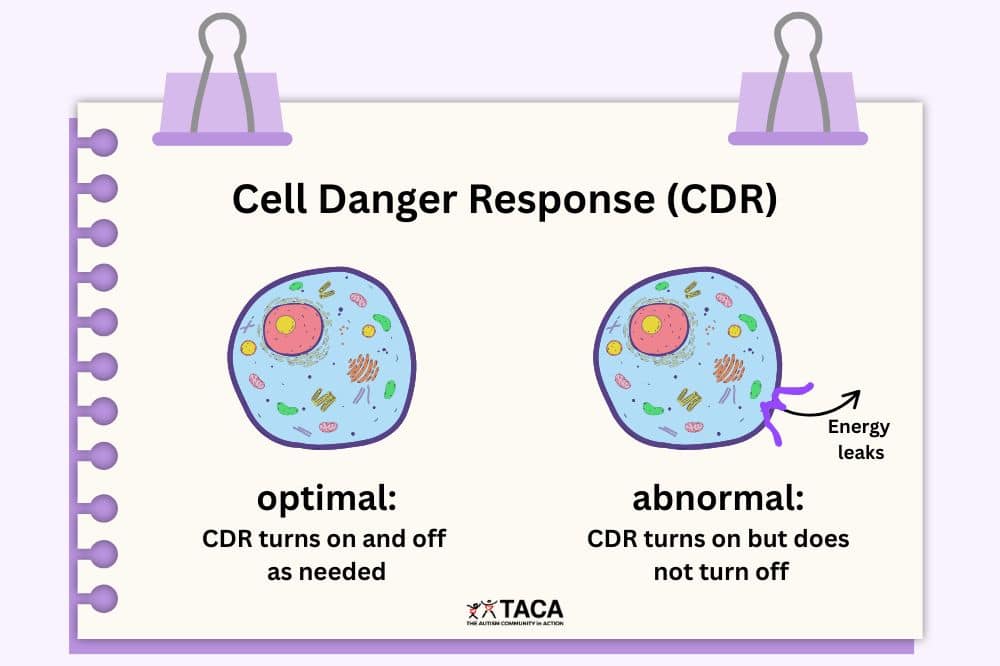Picky Eating and Autism

All contents of this resource were created for informational purposes only and are not intended to be a substitute for professional advice, diagnosis, or treatment. Always seek the advice of your physician, therapist, or other qualified health providers with any questions or concerns you may have.
Kids with autism can be extremely selective when it comes to eating. An estimated 46–89% of children with autism spectrum disorder (ASD) have feeding problems. ASD children struggle with sensory defensiveness, a need for routine and sameness, and visual overstimulation which makes expanding the palate difficult. However, there is often more to this equation that needs to be sorted out in order to get our kids eating healthy and whole foods.
In this article, we will discuss causes of selective eating and measures to correct it. Then, we will offer tips to get your child to try more foods.
What Causes Picky Eating?

If we understand what causes picky eating, then we can begin to address these issues and start to reverse the problem.
Sensory Problems
Many of our kids only like a certain texture, color or temperature food. However, once the following medical issues are addressed, this problem often resolves. A full work-up by a functional medicine doctor can help you identify what is causing the sensory problems.
Delayed Oral Motor Function
This can present as an aversion to textures or even gagging on foods. Kids with this problem may have difficulty moving food around their mouth causing them to be fearful about trying new foods. At least one in three children with autism has significant movement difficulties according to a 2019 study.
When there is difficulty with oral motor function, kids tend to want to drink their meals instead of chew them because it is easier. This is the child that wants to drink milk for every meal.
Feeding therapy and occupational therapy are both helpful in this instance.
Problems Swallowing
When this is the case, kids will gag on foods. This may be due to many things including:
- A developmental delay in swallowing
- Mitochondrial Dysfunction
- It is well established that kids with autism have much higher prevalence of mitochondria that is not working at optimum levels. This affects many aspects of the body, including chewing properly, swallowing and digestion.
- Eosinophilic Esophagitis (EoE)
- This is an autoimmune disorder where white blood cells attack the esophagus causing inflammation and sometimes pain. There is a strong correlation between picky eating and GI disease including EoE. Kids that have EoE may have problems with eating, swallowing, food getting stuck, abdominal pain or gaining weight. Or they may be completely asymptomatic.
- See this article titled, Kids with EoE often mislabeled Picky Eaters. Since immune dysfunction is common in autism, EoE is found many kids with autism.
- The only way to diagnose EoE is with an endoscopy and biopsies. Make sure that the gastroenterologist you chose is an expert in eosinophilic esophagitis and that he/she uses TIGERS/AGREE protocol for diagnosis and treatment. You can find a list of qualified doctors here.
- Problems swallowing can also be due to other medical issues. Be sure to see a qualified gastroenterologist.
Pain
Picky eating can be a self-taught behavior in response to pain. Kids learn to be wary of food very quickly if eating food is associated with pain. According to this study, children with diseases of the upper gastrointestinal tract are more likely to develop feeding problems.
Sources of pain can include:
- Gastroesophageal Reflux Disease (GERD)
- See this paper titled: Dietary Habits and Gastroesophageal reflux disease in preschool children.
- An endoscopy can tell you if GERD is a factor in your child’s picky eating. This link is a good overview of what to expect from the scope.
- Constipation
- When the child is constipated, he or she feels full and doesn’t want to eat. In addition, constipation is extremely painful.
- A child may be having bowel movements every day and still be constipated so the only way to rule constipation in or out, is with an abdominal x-ray.
- More information on constipation in autism found here.
- Tooth pain
- A child may be having tooth pain. If they cannot communicate pain, they will have no way to tell you.
- Get a pediatric dentist on board that knows how to help special needs children. Patience and practice with brushing, flossing and regular dental visits is a good way to make sure your child does not have tooth pain.
Mineral Deficiency
Mineral deficiency is a problem in many kids with autism and will only continue to get worse with continued selective eating. See this paper titled Macro- and MicroNutrient intakes in picky eaters: A Cause for Concern which tells us that intake of zinc and iron are below recommended levels in picky eaters.
Supplementing zinc can be particularly helpful. The major zinc protein in saliva is called gustin. Gustin influences your sense of taste. Because of this relationship between zinc and taste, and because taste and smell are so closely linked in human physiology, impaired sense of taste and smell are common symptoms of zinc deficiency.
Juicing fresh vegetables and fruits may be a solution to get active enzymes, vitamins and minerals into your child. You can start by syringing the juice into their mouth little by little.
Cerebral Folate Deficiency
Recent science has shown that some kids with autism may have a disorder called Cerebral Folate Deficiency which occurs when the folate in the blood is normal, but the folate in the brain is too low. This can cause many developmental problems including picky eating.
Properly treating CFD can make a difference in eating habits.
Find more information on CFD here.
Candida (Fungal) Overgrowth
When there is a fungal overgrowth in the GI tract, it can cause the child to crave grains, carbohydrates and sweets. These foods feed the pathogens and make the child less likely to want other types of foods.
The kid that craves bread, crackers, cookies, and sweets is probably dealing with fungal overgrowth in the gut.
See our article on yeast for more information on how to deal with it.
Food Sensitivities and Food Addiction
Yes! Our kids can actually be addicted to certain foods.
Sadly, most of the time, kids tend to crave the foods that they should not be eating.
Gluten and casein are very long chain peptides that are difficult to break down. If the child has intestinal permeability, also known as leaky gut, these large proteins are passing into the bloodstream where they react with opiate receptors. This makes the child want more of the food they are addicted to.
Addiction to particular foods may also happen because the child is eating foods that has highly addictive ingredients such as glutamic acid in the form of monosodium salt (MSG). This is why Doritos are so addictive. The brain is craving the MSG in them like a drug. Other top foods that have MSG are Ramen Noodles, Pringles, many seasonings and even deli meats.
PANS/PANDAS
PANS/PANDAS occurs when strep or other triggers such as Lyme or viruses trigger a misdirected immune response which results in inflammation in the brain. Two of the biggest symptoms are OCD and/or selective eating.
More information on PANS/PANDAS can be found here.
Take-aways
Practical Tips For Picky Eaters

- Use Movement Before Eating
- If a child’s body has been moving for at least 15 minutes before eating you will have a better success rate with eating. Jumping on the trampoline and swinging are examples of good movement.
- Small Amounts on Plate at a Time
- Put one thing on the plate at a time, so not to visually over-stimulate the child. Add more as tolerated. Keep in mind that sometimes we need to break down the steps even further to help children with autism overcome issues related to picky eating. A feeding therapist can help with this.
- Use Salt
- Salt stimulates the salivary glands and makes you hungry. Starting a meal with something crunchy and salty can actually warm up the mouth and get it ready to eat. And most kids like salt. Adding it to veggies or other food can be very helpful. You can always pare back later if needed.
- Dip it!
- Find a gluten, casein-free spread the child likes and add it to fruit & veggies to get them to try new things. Some kids will try almost anything if it has a chocolate spread on it.
- “Smell it, Kiss it, Lick it”
- Using this approach with each new food gives kids more control over their eating. Just getting over these small hurdles is a big accomplishment for some kids. Be patient.
- Use a mouth brush before eating
- This can desensitize the gums, teeth, cheeks, and tongues of picky children.
- Mouth brushes are available for purchase at most places that sell sensory toys and therapy tools.
- Play Games with Food
- Using food to play games can take the pressure off eating. This is a fun plate to use with kids to keep them motivated.
- Use a Reward System
- A sticker chart works well. Work on one food every day until he or she will eat it consistently. Make sure the reward is attainable by setting goals that fit your child’s abilities. Take baby steps.
- Timing Matters
- Practice eating in the morning or afternoon when the day’s sensory activities have not brought the child to exhaustion. Dinner-time can be particularly hard. Practice in a quiet environment with soft soothing music when the child is hungry.
- Diffuse an Essential Oil
- Kids usually decide if they like a food by the way it smells. Diffusing an essential oil while eating may trick the olfactory system.
- Chill Food Before Serving
- The colder the food is, the less the child can taste it. For example, many kids will eat frozen peas but not cooked or raw peas.
- Limit Snacks
- Kids should be hungry at mealtime. Scheduling snacks into the day is fine, but food grazing all day long is counterproductive.
- Creative Cooking
- Bake steamed, pureed and chopped vegetables into food. This is a great site that explains ways to sneak veggies into food without sacrificing flavor.
- Use a Social story
- A social story explains to the child what is expected. An example of a social story for picky eaters is here. A visual schedule may work as well.
- Food Chaining
- Food Chaining is a technique that creates a series of links between those foods the child eats well to new foods you want the child to eat.
- Feeding Therapy
- As was discussed above, sometimes feeding therapy is necessary to help resolve issues related to picky eating in autism. This is especially true when there is delayed oral motor function or very strong aversions.
- Occupational Therapy
- Occupational therapy can help a child who has a sensory aversion to new foods.
- Applied Behavior Analysis
- A trained BCBA can use various techniques to help your child tolerate new foods.
Conclusion
At TACA, we know picky and selective eating is a serious issue facing families. We understand this is not easy. As parents, we have been through it. But we also know that it can be done. As is outlined above, picky eating can be a result of many different circumstances. It requires a team of professionals and a commitment from home to make considerable changes. You can do this!




